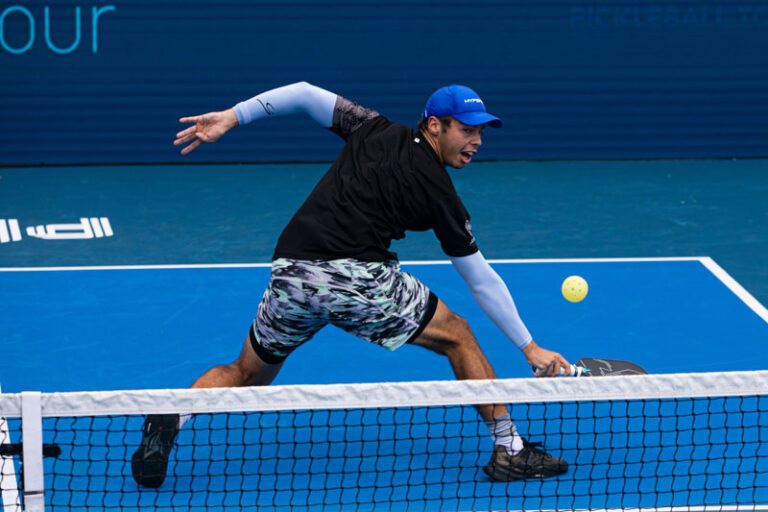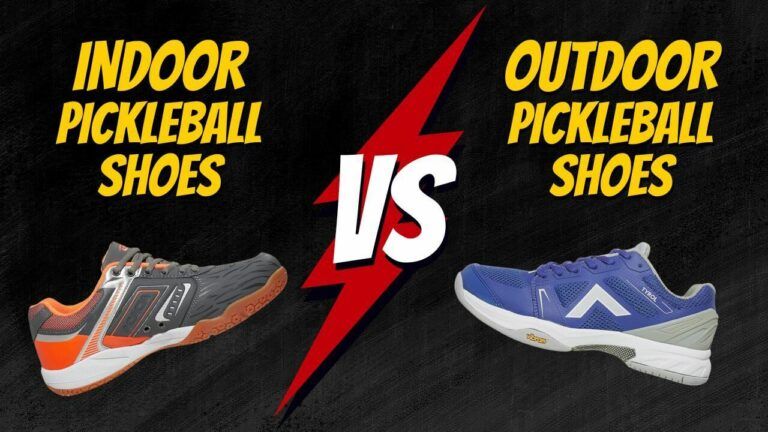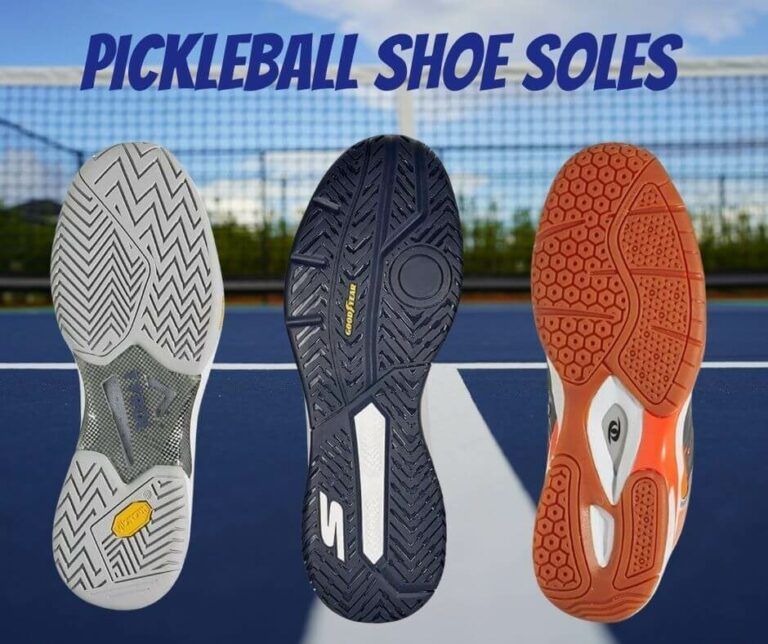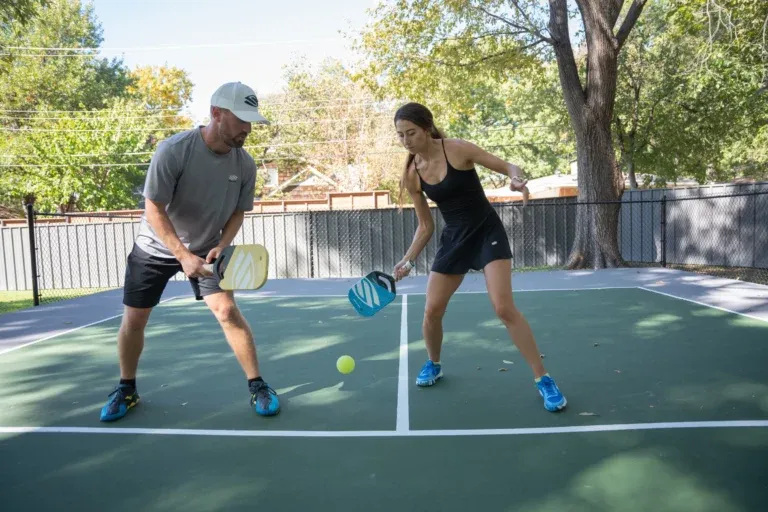Why Pickleball Shoes Matter
Choosing the appropriate footwear for pickleball can make a significant difference in your performance, comfort, and overall enjoyment of the game. While many might underestimate the importance of shoes, they play a vital role in optimizing grip on the court and providing support during quick movements. Just as a well-tailored suit can elevate one's confidence in a professional setting, the right pair of shoes can enhance your agility and stability on the pickleball court.
The impact of suitable footwear extends beyond performance; it also touches upon health and injury prevention. The wrong shoes can lead to foot fatigue or worse, injuries that may sideline players for weeks or even months. With all these factors in mind, let’s explore how specialized footwear can improve your game and protect your body.
Enhancing Performance
When it comes to executing movements on the court, the grip, support, and stability provided by pickleball shoes are fundamental. Indoor shoes typically feature softer, flat soles constructed from gum rubber, expertly designed to optimize traction on smooth surfaces. The level of grip is similar to that of a dancer’s shoe on a polished floor, allowing for quick lateral movements and pivots without hesitating.
Conversely, outdoor shoes are built with durability in mind, featuring thicker soles equipped with aggressive tread patterns. Imagine a sturdy hiking boot designed to tackle rough terrain; that's how outdoor shoes prepare players for unpredictable outdoor conditions. Each type of shoe is purposefully crafted to ensure players can make those critical movements whether it’s a swift lateral dash or a quick pivot effectively and safely.
Preventing Injuries
Footwear specifically designed for pickleball plays a crucial role in protecting the feet, ankles, knees, and other joints from the stresses involved in the game. The right shoes can absorb impact, thereby reducing the strain on your body. Indoor shoes, with their lightweight and responsive designs, allow players to enjoy quick and agile movements, while still providing necessary support for the often lateral motions seen in pickleball.
Outdoor shoes, on the other hand, come equipped with cushioning designed to absorb shock, particularly when players find themselves playing on harder concrete or asphalt surfaces. Not only does this cushioning offer comfort, but it also functions as a protective barrier between your feet and the unforgiving ground similar to how a car’s shock absorbers protect passengers from bumpy roads. The careful selection of footwear can substantially decrease the risk of injuries like sprains or stress fractures, making it imperative for players to recognize the importance of their shoe choice.

Understanding the Differences: Indoor vs Outdoor Pickleball Shoes
Understanding the differences between indoor vs outdoor pickleball shoes begins with recognizing the courts on which each type is played. The contrasting surfaces inherently demand different footwear features to optimize performance and ensure safety.
Indoor shoes are designed for smooth and polished surfaces like hardwood or synthetic gym floors. The evolution of these shoes has brought forth designs that enhance stability during quick foot movements characteristic of indoor play. Factors like breathability and flexibility are prioritized to maintain comfort over extended periods.
In stark contrast, outdoor shoes must withstand the rigors of rough surfaces, such as concrete or asphalt tennis courts. Their construction often includes thicker and sturdier soles, which are essential for maintaining grip and providing shock absorption on such surfaces. The durability of outdoor shoes allows for extended use in harsher conditions, avoiding premature wear.

Key Features to Consider
To make an informed choice about which pickleball shoes to purchase, it’s crucial to consider the following key features:
- Sole Material
- Indoor Shoes: Most often made from gum rubber, known for its excellent grip and non-marking properties.
- Outdoor Shoes: Generally constructed from high-abrasion synthetic rubber designed for durability on rough surfaces.
- Tread Pattern
- Indoor Shoes: Feature herringbone or flat treads optimized for quick pivots and lateral movements.
- Outdoor Shoes: Equipped with deeper and more aggressive treads for superior grip on uneven outdoor surfaces.
- Cushioning and Support
- Indoor Shoes: Typically focus on responsiveness and agility, offering less cushioning to aid court feel.
- Outdoor Shoes: Provide more cushioning and support to combat the harsh impacts from outdoor play.
- Durability and Breathability
- Indoor Shoes: Are often lighter and more flexible but may not hold up against rough surfaces.
- Outdoor Shoes: Constructed with thicker materials, increasing durability while sacrificing some breathability.
These features are not just abstract concepts; they directly dictate how players experience their games. Making the right choice in footwear tailored to your specific needs and the conditions of your playing environment can significantly affect your performance.

Matching Shoes to Playing Style
Every player approaches the game differently, which means that personal playing style can greatly influence the type of shoe that suits you best. For instance, aggressive players who thrive on swift movements might prioritize lightweight shoes that offer excellent responsiveness and grip. Think of how a sprinter feels in lightweight running shoes, optimized for quick starts and fast strides.
Alternatively, defensive players who endure extended rallies may benefit from shoes that offer greater cushioning and support. The added comfort of such footwear can alleviate fatigue and help maintain focus during longer matches, akin to the support a marathon runner requires over lengthy distances.
Specific shoe features can augment various pickleball movements, such as:
- Lateral Support: Crucial for side-to-side movement during play.
- Heel-to-Toe Drop: A lower drop can inspire quicker reactions by enhancing court feel.
- Outsole Flex Grooves: Allow flexibility for more dynamic multi-directional movement.
Understanding your playing style and how it correlates to shoe features can lead to an impressive improvement in performance, making it essential to reflect on how you approach the game.
Choosing the Right Fit and Size
Proper fit is imperative for both optimal performance and injury prevention in pickleball. Many players make the mistake of choosing shoes without adequate consideration for their foot dimensions and arch type. Even the best-designed shoes won’t perform if they don’t fit properly.
When it comes to selecting the right footwear, measuring your feet accurately is the first step. To ensure a proper fit, consider measuring your foot size and width, referencing various foot measurement charts for precision. Proper arch support is also critical individuals with high arches require footwear that offers elevated support, while those with flatter feet may need stability features.
When trying on shoes, it’s advisable to simulate movements integral to pickleball. Walk, run, and mimic various court movements to assess comfort and support. Take your time in the fitting process; don’t rush these shoes are your allies on the court, providing safety, stability, and comfort throughout each match.

Shoe Care and Maintenance
Like all equipment, proper care and maintenance of your pickleball shoes is essential for preserving their performance and extending their lifespan. Here's how to ensure you get the most out of your investment:
- Cleaning: Regularly wipe down the shoes after use to remove dirt and debris. For deeper cleaning, use mild soap mixed with water and a soft brush to avoid damaging materials.
- Drying: Always allow shoes to air dry naturally. Avoid direct sunlight or heat sources, which can warp or damage the materials.
- Storage: Store shoes in a cool, dry place. Avoid stacking heavy objects on top of them, as this can deform the shape and structure of the shoe.
By following these simple care instructions, you can keep your shoes in optimal condition, thereby enhancing their longevity and performance.
Top Pickleball Shoe Brands and Recommendations
As the popularity of pickleball continues to rise, numerous brands have sprung up to meet the demand for specialized footwear. Below are some of the most reputable brands, along with specific models that cater to varying playing styles and needs:
- Asics: Known for their agility-enhancing shoes, Asics offers models like the Gel-Resolution, which provides responsive cushioning and support.
- Babolat: Their Propulse Blast shoes boast robust support and stability, perfect for players who prioritize comfort during extended play.
- K-Swiss: The Hypercourt shoe combines breathability with durability, catering to both indoor and outdoor needs.
- New Balance: With models like the 996v4, New Balance showcases a perfect balance of support and lightweight feel, ideal for aggressive players.
- Nike: The Nike GameCourt is tailored for quick movements, providing excellent grip and comfort.
When selecting the best pickleball shoes, consider your specific playing style, court conditions, and personal preferences regarding fit and comfort.
Common Pickleball Shoe Mistakes to Avoid
Avoiding common pitfalls when selecting your pickleball shoes can save you from unnecessary discomfort and injuries. Here are some mistakes to watch out for:
Wearing the Wrong Type of Shoe
Running shoes, tennis shoes, or other athletic footwear not specifically designed for pickleball may lack the necessary features, such as grip and support, leading to an increased risk of injuries.
Ignoring Court Surface
Different courts require unique shoe characteristics. Neglecting to consider the surface can lead to rapid wear and poor performance. Opt for shoes that align with the playing environment to maximize performance.
Prioritizing Style Over Functionality
While appearance might be important, comfort and support should always come first. Shoes that look good but don’t fit properly can compromise both your enjoyment and performance on the court.
Neglecting Shoe Care
Proper maintenance of shoes is crucial. Failing to clean or store them appropriately can result in shorter lifespans and diminished performance capabilities.
Advanced Considerations: Foot Health and Customization
Foot health is an essential aspect of athletic performance. Relying solely on the shoe’s characteristics isn’t enough; understanding your foot type can lead to better decision-making regarding footwear.
Impact of Foot Type and Biomechanics
Factors like foot type, pronation, or supination play a significant role in how your feet interact with the ground. Identifying whether you have flat feet or high arches enables you to seek the right support and stability.
The Role of Insoles and Orthotics
For players experiencing foot pain or discomfort, insoles or custom orthotics can enhance arch support and address specific biomechanical issues. This can lead to improved performance and comfort, making it worthwhile to seek professional advice.
Injury Prevention and Foot Health
Proper warm-up routines, stretching, and maintaining proper technique on the court can go a long way in preventing injuries. Combine high-quality footwear with proactive health measures to ensure a rewarding pickleball experience.
In conclusion, when considering indoor vs outdoor pickleball shoes, recognizing the inherent differences is vital for optimized performance and injury prevention. With the right knowledge, you can select shoes that not only suit your playing style but also enhance your overall experience on the court, just as a well-chosen instrument can elevate a musical performance. Your shoes may seem like a small part of your gear, but they hold the power to influence every stroke, serve, and rally. Choose wisely, and watch your game soar.










